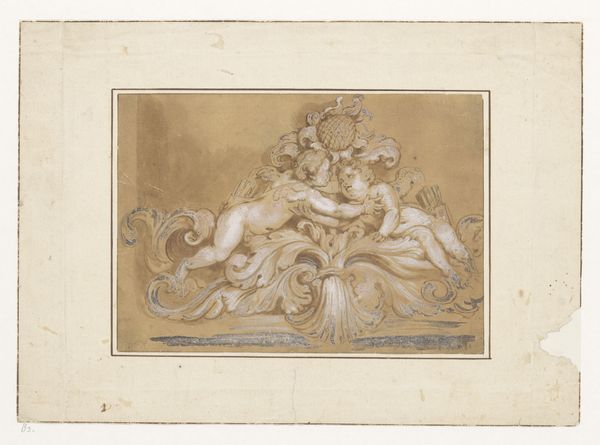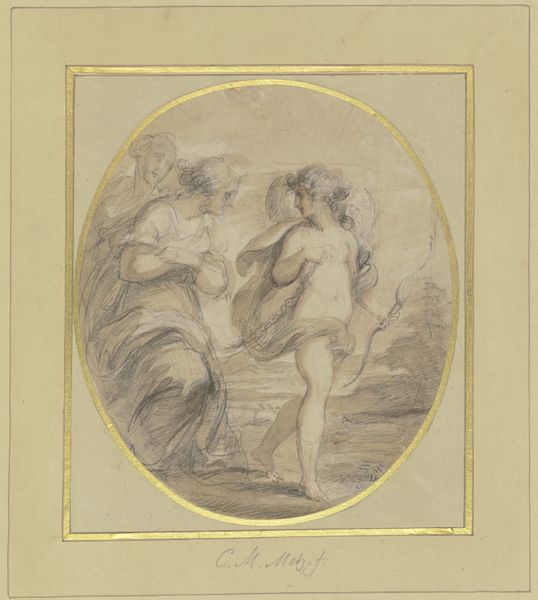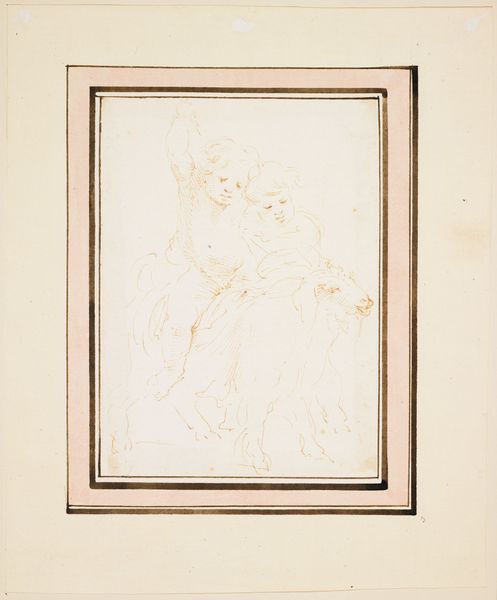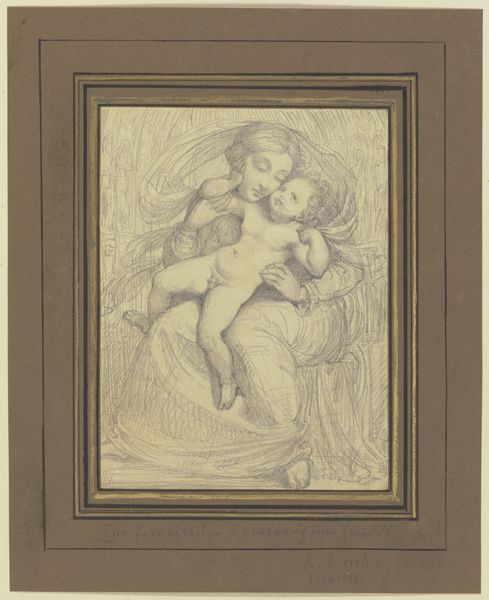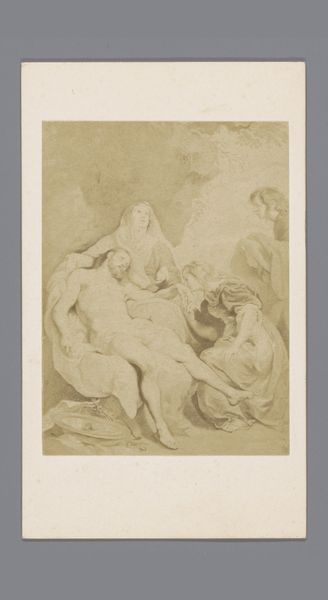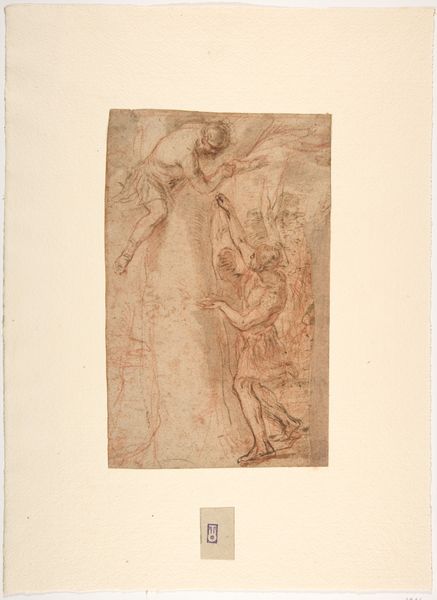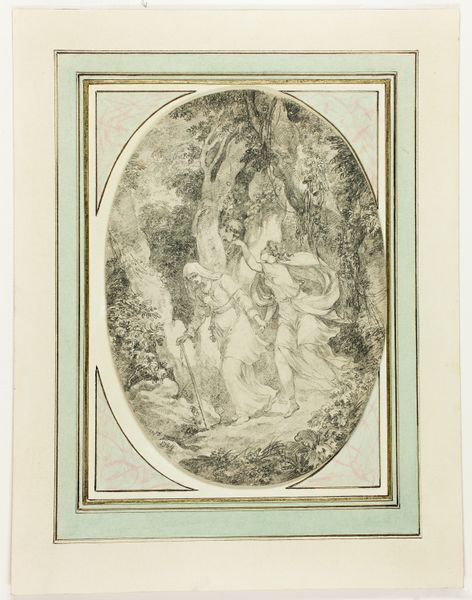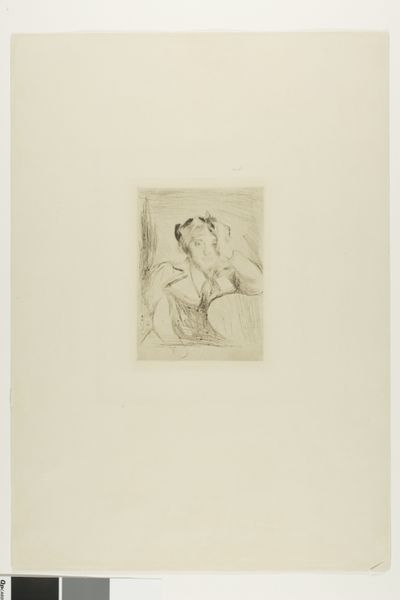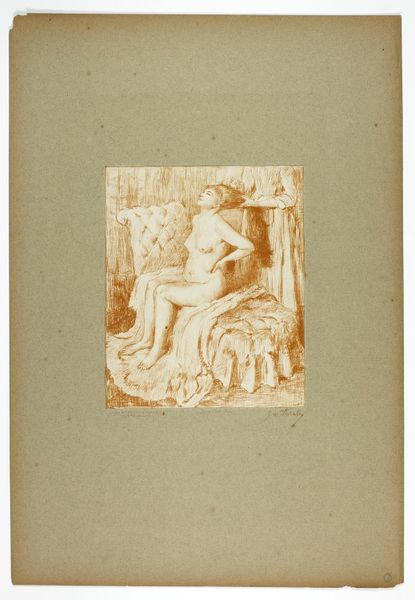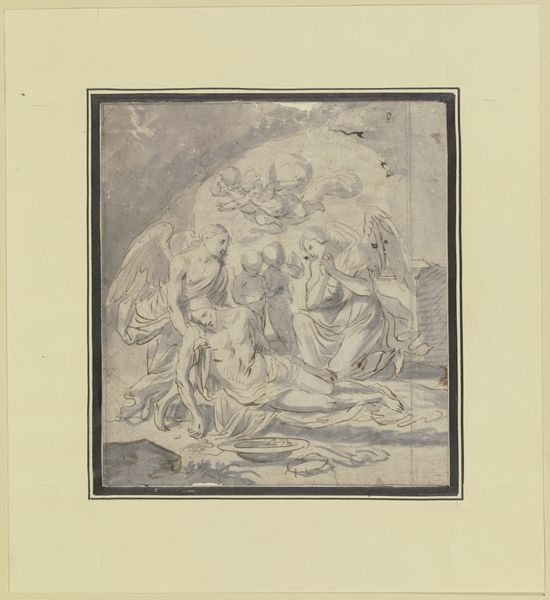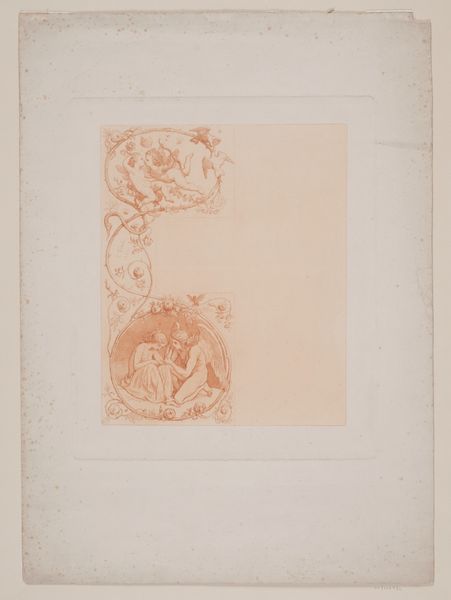
Standing Nude Child Surrounded by Women and Children 1489 - 1534
0:00
0:00
drawing, print, paper, pencil
#
portrait
#
drawing
# print
#
figuration
#
paper
#
11_renaissance
#
pencil
#
italian-renaissance
#
nude
Dimensions: sheet: 7 11/16 x 5 7/8 in. (19.6 x 14.9 cm)
Copyright: Public Domain
Curator: I'm drawn to the ethereal quality of this work. What are your first impressions? Editor: It feels quite provisional, almost tentative. A flurry of red chalk on paper, figures emerging from a ground of indistinct shapes, capturing a brief moment. We’re looking at Correggio’s "Standing Nude Child Surrounded by Women and Children," created sometime between 1489 and 1534. It is held at the Metropolitan Museum of Art. Curator: Note how Correggio uses the red chalk not for precise outlines, but rather for modeling and building volume through hatched and cross-hatched lines. The tonal range he achieves with just a single color is remarkable. The nude child in the center is almost luminous against the surrounding figures. Editor: And the immediacy that comes through with chalk speaks volumes. This wasn’t a commission; this was probably created to explore an idea. How does Correggio, and perhaps his studio, source his chalk? The history of materials is so fascinating! The use of chalk means this could be something more exploratory, rather than a preparatory study. Curator: Perhaps. Look closer at how the composition directs the eye. The central figure and its halo of gestural marks dominate the composition, almost bursting out of its frame, then the gaze follows downward towards the women huddled in the lower foreground, whose more grounded posture helps counterbalance the energetic boy. Editor: Yes, and that material reality influences everything. Did he have to send assistants into the field to locate specific clay deposits? Or did Correggio have his own sources and a way of controlling the purity and hue of his raw materials? Curator: Thinking of the artist, Correggio employs contrapposto, but in a more softened and sensuous form, deviating from typical conventions by utilizing more curved shapes than other Renaissance masters of the time, as this allows Correggio's characters and subject matter a more inviting, gentle persona. Editor: I see it in a way that reflects material and social practice; even in idealized forms such as that of the child. A focus on process emphasizes the amount of work that happens between observation and completion, when a red chalk sketch, such as this, takes shape and is given permanence and value through being added to collections and accessed in museums such as this today. Curator: Absolutely. The interplay between the observed and the artistic choices—Correggio offers us such a deep experience. Editor: An insight into how Renaissance art wasn't just about beauty, but about making as an essential facet of its character.
Comments
No comments
Be the first to comment and join the conversation on the ultimate creative platform.

